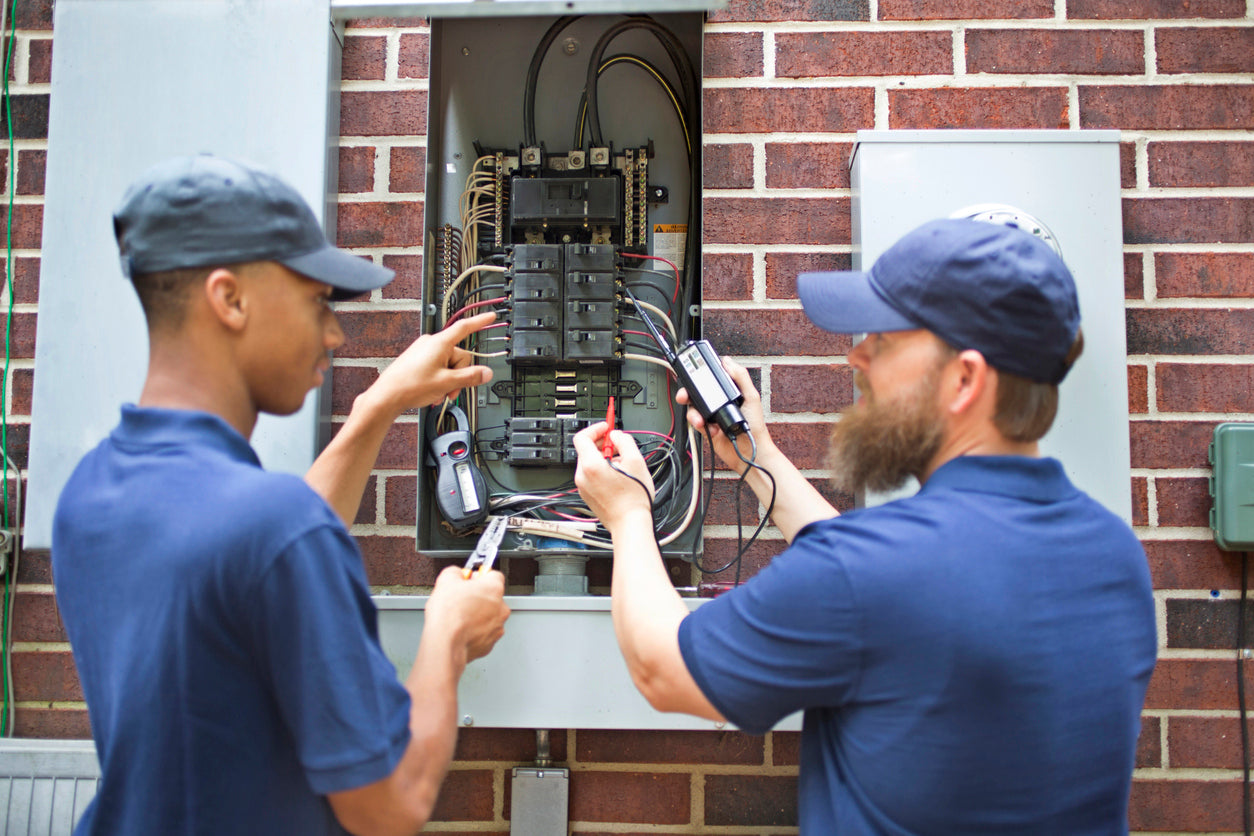Electrical issues in your home can be frustrating and potentially dangerous if not handled properly. While many electrical problems should be addressed by a professional electrician, some basic troubleshooting can help you identify and possibly resolve minor issues. Here are some essential tips for safely troubleshooting electrical problems at home.
Safety First: Basic Precautions
Before attempting any troubleshooting, ensure you take the following safety precautions:
-
Turn Off Power: Always switch off the power at the main breaker panel before inspecting or repairing any electrical component. The main breaker is the larger, sometimes double, switch at the top of your electrical panel. The Spruce has a very helpful blog, 'How to Turn Off the Power to Your House', if you'd like more detailed instructions.

- Use Proper Tools: Insulated tools and non-contact voltage testers are crucial for safely working with electrical systems.
- Avoid Water: Never work on electrical systems in damp or wet conditions to avoid electric shock.
- Wear Protective Gear: Use rubber-soled shoes and avoid wearing metal jewelry that can conduct electricity.
5 Common Electrical Problems and How to Troubleshoot Them
1. Power Outages and Circuit Breaker Trips
Symptoms: Entire sections of the house lose power, or certain circuits frequently trip.
Troubleshooting Steps:
- Check the Breaker Panel: Identify if any circuit breakers have tripped. Reset the breaker by switching it off and then back on. A tripped circuit breaker will look different from the others. Some breakers have a TRIP window that will turn red if the breaker has tripped. For help determining which, if any, of your breakers have tripped, check out 'How to Tell If a Breaker Is Tripped: Everything You Need to Know' from Angi.com.

- Inspect for Overloads: If the breaker trips again, unplug some devices to reduce the load on the circuit.
- Identify Faulty Appliances: Plug in appliances one by one to determine if a specific device is causing the trip.
2. Flickering or Dimming Lights
Symptoms: Lights flicker or dim intermittently.
Troubleshooting Steps:
- Tighten Bulbs: Ensure bulbs are screwed in securely.
- Replace Bulbs: Swap out bulbs to see if the issue persists, indicating a problem with the fixture or wiring.
- Check Wiring: Turn off the power before inspecting or repairing any wiring. Inspect for loose or frayed wiring at the fixture.
3. Dead Outlets
Symptoms: One or more electrical outlets are not working.
Troubleshooting Steps:
- Test the Outlet: Use a non-contact voltage tester to check if the outlet is receiving power.
-
Reset GFCI Outlets: If the outlet is part of a Ground Fault Circuit Interrupter (GFCI) circuit, press the reset button. It is usually a brightly colored button, like the red, blue and yellow examples below.
- Inspect Wiring: Check for loose connections or damaged wires inside the outlet box. Ensure power is off before doing this.
4. High Electric Bills
Symptoms: Unusually high electricity consumption without a clear cause.
Troubleshooting Steps:
- Identify Power Hogs: Unplug devices and appliances that are not in use, especially those with a high power consumption.
- Inspect for Faulty Appliances: Malfunctioning appliances can draw excessive power. Test appliances to identify any that may need repair or replacement.
- Check Insulation and Heating/Cooling Systems: Poor insulation and inefficient HVAC systems can significantly increase electricity usage.
5. Buzzing Sounds or Burning Smells
Symptoms: Unusual buzzing noises or burning odors near electrical outlets or fixtures.
Troubleshooting Steps:
- Turn Off Power Immediately: These are serious warning signs of potential electrical fires.
- Inspect Outlets and Fixtures: Look for signs of damage, such as scorch marks or melted components.
- Call a Professional: These issues often require the expertise of a licensed electrician.
When to Call a Professional
While basic troubleshooting can resolve minor issues, many electrical problems require professional attention. Call a licensed electrician if you encounter any of the following:
- Persistent circuit breaker trips
- Frequent power outages
- Unusual smells or sounds from electrical components
- Visible damage to wiring or electrical panels
- Any situation where you feel unsure or unsafe
Conclusion
Basic troubleshooting can help you identify and resolve some common electrical problems at home, but safety should always be your top priority. For complex issues or any situation that poses a safety risk, it's crucial to consult a professional electrician. By understanding the basics of electrical troubleshooting and recognizing when to seek expert help, you can maintain a safe and efficiently functioning home electrical system. Sites like Thumbtack and Angi (formerly Angie's List) can help find trusted electricians in your area.




